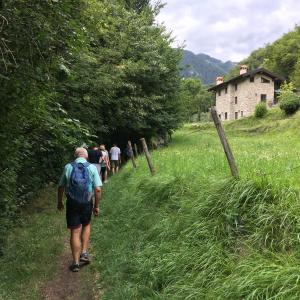Brasa Valley winds towards the lake starting from Villa, just outside Pieve di Tremosine sul Garda, all the way to the shores of Lake Garda.
Along the valley, the landscape changes considerably - towards the north it is wider and lush, and then it becomes rocky and narrow as you descend towards the lake.
The Strada della Forra runs parallel to the valley and its canyons. If you follow, it you’ll discover the most impervious part of the Brasa Valley, where, between the narrow rocky walls, the stream of the same name flows, originating in turn from the Bondo stream.
Nowadays, Brasa Valley houses bed and breakfast and restaurants, which offer hospitality and traditional cuisine, in an environment that is absolutely unique.
However, once upon a time the valley was home to mills, blacksmiths' forges and sawmills. Here, artisans and craftsmen worked on metals and logs coming from the forests of the Alto Garda Bresciano Park. Other small craft businesses came to life, using the power of running water to power machinery and equipment.
The mill is still visible today - it hasn’t been in use since 1961, but before then it was used to crush grains in order to obtain corn, wheat and bran flours.
Corn flour is the basis of many sweet and savory specialties including polenta, the main food of the Brescian mountains for which ‘farina salda’ was used.
In this narrow, dimly lit valley there was also a tannery, built on the source of the Brasa stream, which remained in use until around 1912.
The Brasa Valley is the perfect place for sports - trekking and Nordic walking lovers will find itineraries to discover the nature and history of Tremosine.
A curious fact? In Brasa Valley you can also go cult walking, an activity that combines the love for sports with the desire to discover something more about Tremosine and life in Val di Brasa.
One of the many paths passes by the forges and craft workshops that once helped the subsistence of the local economy, providing an outlook on the history of Tremosine’s community.





